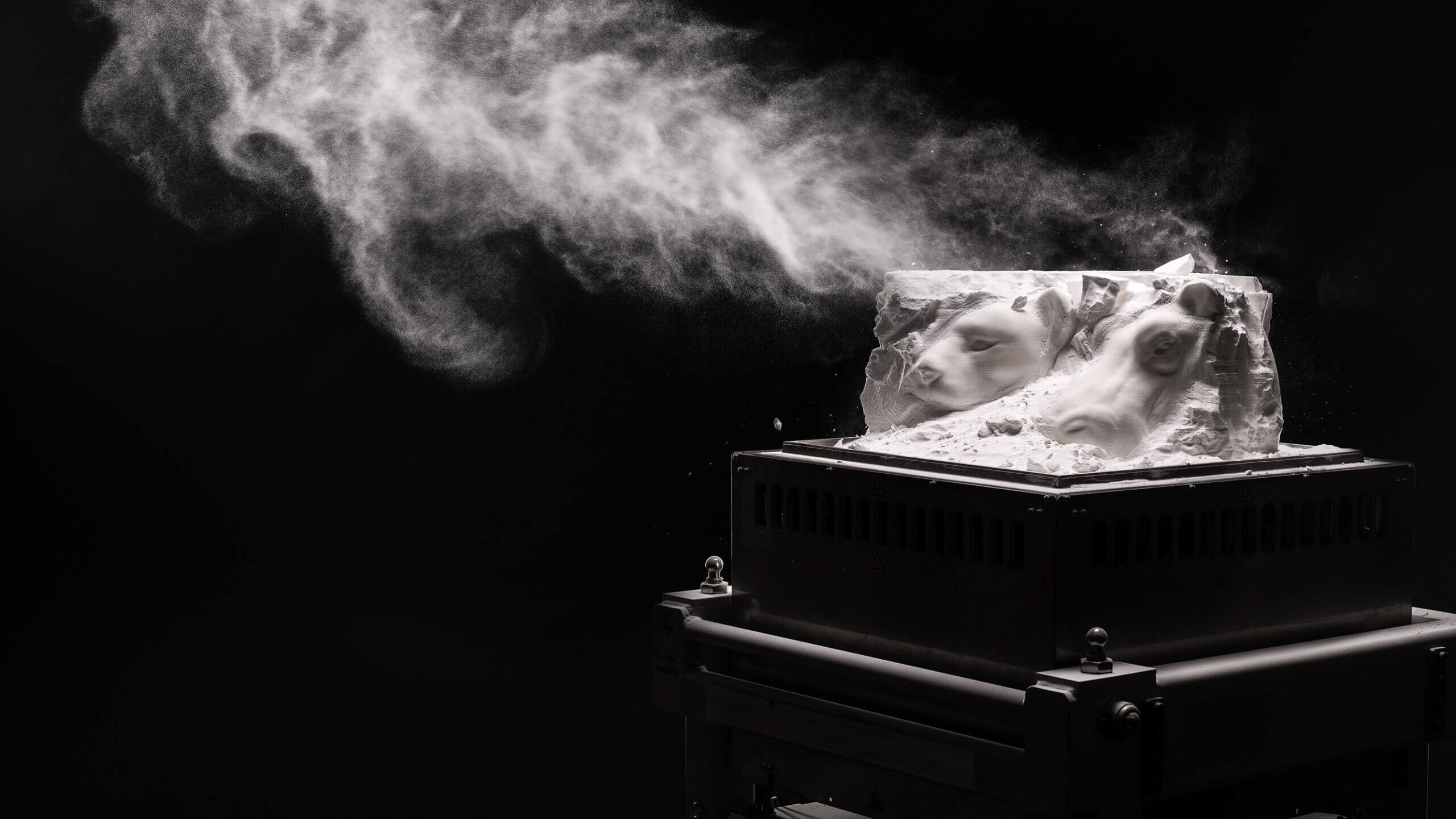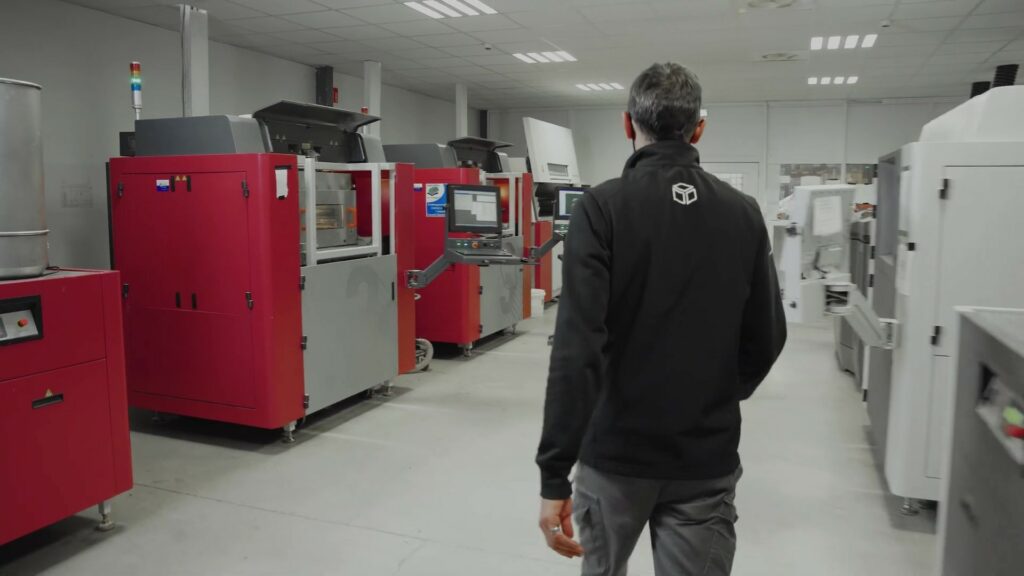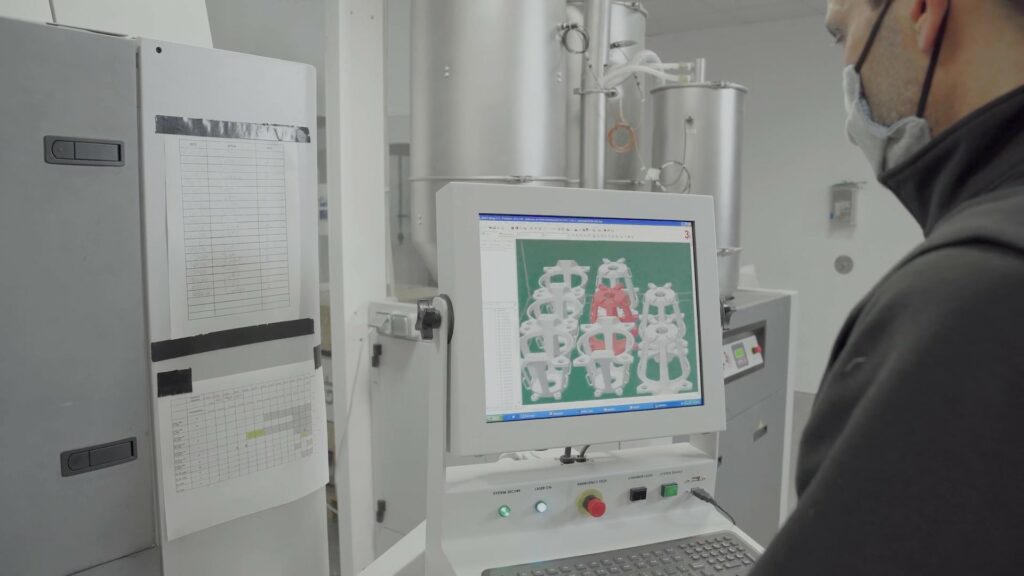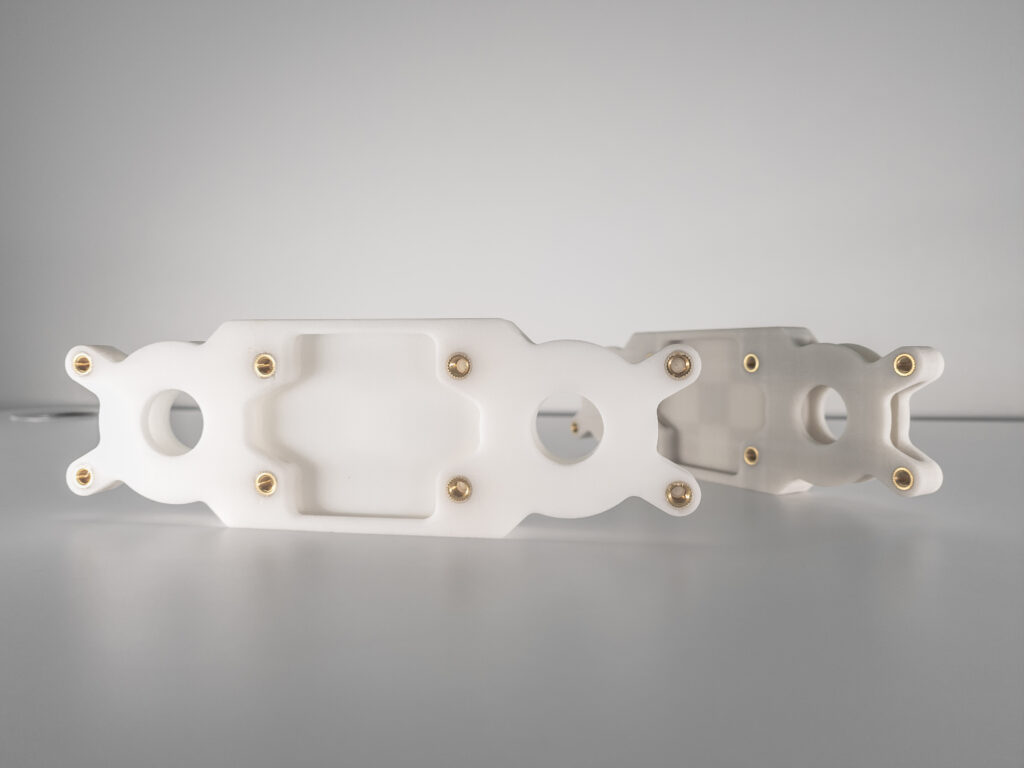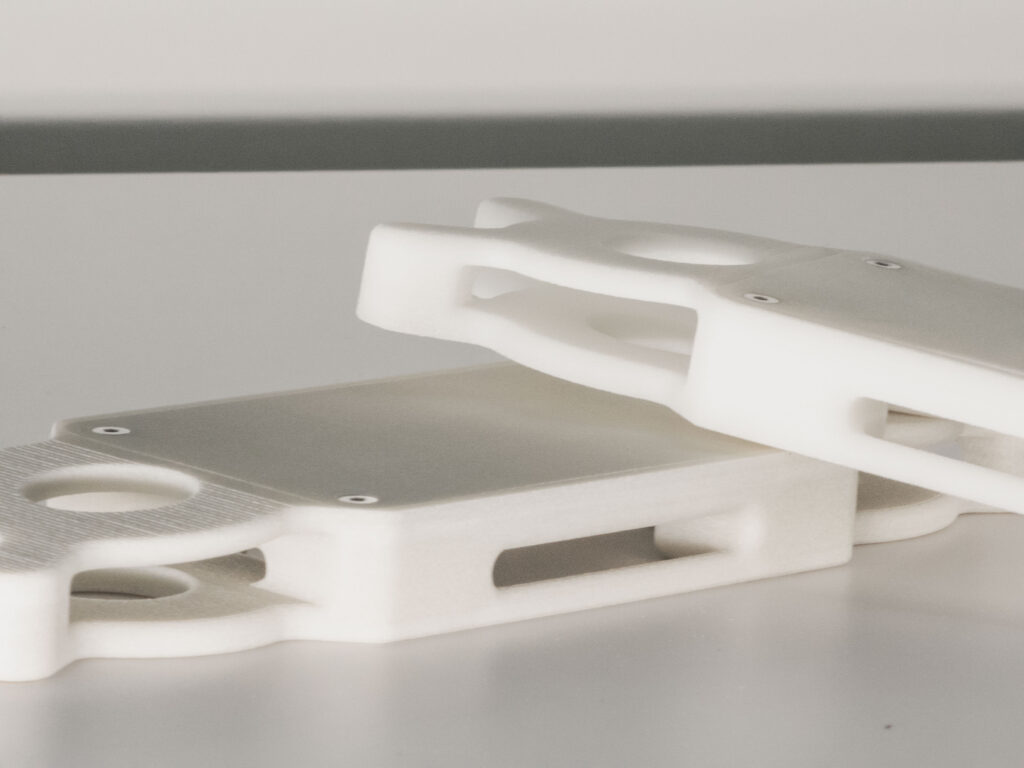Laser sintering (SLS): the ideal solution for designing geometric complexes!
The selective laser sintering or Selective Laser Sintering (SLS) is one of the most widely used additive manufacturing processes on the market. The principles of this technology were developed in the 1980s and commercialized in the 1990s. But how does SLS work, and what are its advantages?
SLS involves depositing a thin layer of polymer powder on a plate, which is then sintered by a laser. Point by point, the laser fuses the material particles together, creating the desired object layer by layer. One of the main advantages of this process is its speed, the quality of the parts obtained and the geometric complexity now possible.
3D Prod has been using SLS for several years now, enabling us to meet the needs of small production runs, functional prototypes and even the design of structures with complex geometries without sacrificing strength.
How does laser sintering work?
Once the 3D file is ready for printing, it is sent to the SLS 3D printer. The printer begins by depositing an initial layer of polymer powder on the platen using a roller. A laser is then used to sinter the powder in the desired places, thanks to a mirror that directs its movement: under the effect of the laser's heat, the powder particles will agglomerate together. As soon as the first layer is complete, the roller removes the unsintered powder and deposits a new layer of material until the final part is obtained.
When the 3D printer has completed its cycle, the result is what's known as a print cake, in which the 3D-printed parts are wrapped. This is actually the print tray filled with powder: while one part has been sintered, the other will have to be removed. After waiting for it to cool down, we break this print cake to recover our parts. This is followed by a de-powdering stage to remove the excess unsintered powder, sanding to obtain an optimum surface finish, and tinting if the final part needs to be colored.
One of the strengths of SLS technology is that some of this unsintered powder can be recycled. In fact, 70% can be reused and mixed with new powder. Another specific advantage of SLS technology is that this unsintered powder acts as a printing substrate; So there's no need to design support structures, whatever the geometry of the part.
Part dimensions and possible applications
As with every printing process, the maximum part size will depend on the size of the platen. SLS generally offers generous volumes; our largest machine has a maximum capacity of 500 x 500 x 400 mm. But what's particularly interesting about laser sintering technology is that it enables us to design multiple parts at the same time. Because our parts are enveloped in a vat of powder, it is possible to maximize the quantity of parts required - for example, we can stack several parts on top of each other, which is not possible with stereolithography or FDM. This is known as nesting.
Powder sintering will therefore be of interest not only for the design of small series, but also for functional parts, inserts, screwing, clipping, etc. Compatible materials offer high mechanical and thermal resistance, making it possible to design complex parts that last over time.
Our laser sintering equipment
Our fleet currently comprises 4 SLS machines offering a minimum wall thickness of 0.7 mm and strata of 0.1 mm. Three of them offer a print volume of 500 x 500 x 400 mm. We have a smaller printer with a maximum capacity of 330 x 380 x 400 mm. We have equipped our machines with removable carts, or RCMs, to minimize machine downtime. As soon as a print is ready, our teams can easily remove the cart to start post-processing, and place a new one to start a new print. In this way, there's no need to wait for the de-soldering stage to be completed before restarting production. We currently have 6 RCMs.
In addition, we have invested in an intelligent recycling system that enables us to recover 70% of unused powder and mix it with new powder. This makes materials management easier and faster, without risk to our operators.
Finally, on the post-treatment side, we now work with a sandblasting machine, an automated dyeing unit and a de-soldering station.
The materials available for 3D SLS printing
We offer three types of nylon (PA) for 3D SLS printing printing: a white polyamide, a beige glass-bead-filled polyamide and a flame-retardant polyamide.
- The white PA is a thermoplastic with good chemical resistance, low moisture absorption and excellent surface finish. It is compatible with autoclave sterilization and offers a good balance between mechanical properties and ease of use. It's the material of choice for prototypes, small series and tooling.
- Visit PAGF is a glass-bead-filled thermoplastic that is resistant to high temperatures and easy to use. It offers high dimensional stability and excellent mechanical rigidity. It is ideal for 3D printing usable parts, rigid components or end-use parts without tooling.
- Finally PA is flame-retardant has good thermal stability, limiting the spread of fire in the event of a conflagration. It is particularly well-suited to mechanical parts in the aerospace, automotive and electrical industries. In particular, it has obtained JAR 25 certification, the aviation acceptance criterion.
Time and costs
SLS manufacturing times and costs vary according to the volume of parts required, but one of its advantages is undoubtedly its speed. By optimizing part orientation through nesting, small and medium-sized production runs can be produced quickly and efficiently, using just the right amount of material. As the process does not require the use of print media, parts can be stacked in the print tray, enabling multiple parts to be designed simultaneously.
What's more, since the unsintered powder is partly recycled and the operator can control the density of the arrangement, the cost per part is reduced.
It should be noted, however, that the post-treatment stages lengthen manufacturing times: after waiting for the powder vat to cool down, you'll have to go through de-powdering and sandblasting stages, and possibly dyeing.
3D Prod tip : Test your projects by making your quotes online via our dedicated platform: Get your quote online!
To conclude
Laser powder sintering is a high-performance additive manufacturing process that enables the design of complex, isotropic, high-resolution parts. Its good mechanical properties make it an ideal technology for creating functional prototypes and finished parts.
Thanks to our range of machines and post-processing solutions, 3D Prod can support you in your manufacturing projects and guarantee you optimum results. Don't hesitate to contact our teams!
